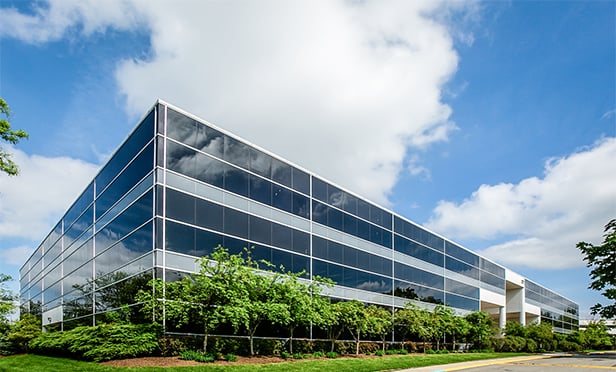
Fears of another recession, global debt levels, uncertainty regarding taxes and regulation are confidence killers among US companies that must drive a fundamentals-based recovery to heal the consumer sector. The recovery may be lacking momentum, but evidence suggests contraction is unlikely, barring an unexpected shock. Companies have wrung maximum productivity from their operations and need more help, leading to improved, if below average, job growth in 2011. Election results should contribute to reducing uncertainty and move the political agenda more to the center, with likely compromises on key issues. The impact of the Fed's bond purchases may be questionable, but the message of readiness to shore up near-term conditions is clear.
The apartment recovery rallied above expectations in 2010 thanks to the release of pent-up renter demand, lower tenant rollover and job growth. Occupancies in other property sectors are at or close to bottom, and gradual recovery will begin in 2011, led by industrial and retail, then office properties.
The concentration of sales in the upper end of the market reflects an intense flight to safety. In 2011, investors will likely move down the quality spectrum as premium property returns dip and the cap rate/interest rate gap, along with locking in cheap debt ahead of rent growth, provide a safety net. Financing will ease further, but tight underwriting is definitely here to stay, even as the commercial mortgage-backed securities market expands and banks become more willing to lend.
Lender response to distressed real estate has played out quite differently from the early 1990s. In the current cycle, lenders have minimized fire sales, especially for quality assets, thus limiting large-scale opportunistic buying and frustrating many vulture and opportunity funds. In 2009 and year to date, more than 80% of the distressed property sales were under $5 million.
In the third quarter of 2010, new additions of troubled assets totaled $13.7 billion, which represented a 61% decline from the same period last year and were off set by $11.3 billion in workouts and restructured loans, minimizing the net increase in outstanding distressed assets to the smallest in two years.
Approximately $281 billion of commercial real estate properties were classified as distressed assets in the most recent cycle; of those, one-third have been restructured or liquidated. About half of those resolved culminated in restructured or extended loan terms, with the remainder completed through new financing or sale. The balance of known outstanding distress is estimated at $158 billion, while the inventory of lender REO has reached approximately $34.3 billion. Opportunities exist in different forms of distressed acquisitions, ranging from note sales and sourcing fresh equity to restructuring deals; however, it requires far more work, sophistication and networking to identify and take advantage of distressed situations. Currently, more than 20% of outstanding commercial debt is held in tranched CMBS, adding a level of complexity to the ownership of underperforming assets. This dilemma has resulted in limited offerings and, consequently, the broader commercial real estate market resetting at a slower pace. A suspended animation has fostered gradual price rediscovery, especially when compared to the early 1990s, which were marked by massive and highly discounted dispositions of commercial property by the US government via the Resolution Trust Corp.
Core, quality assets fetch a true premium in today's market, while lesser-quality and more illiquid properties in secondary or tertiary markets remain hindered by risk-averse buyers and lenders. Sales velocity, although substantially improved since its mid-2009 bottom, will stay sluggish for a while as a result. Generally, lenders remain less inclined to sell under-performing debt and assets, delaying the deleveraging process. The redistribution of noncore, distressed and revalued assets will occur, but over a two-to-three-year period as loan maturities roll, lenders gain financial strength and fundamentals improve. The availability of debt clearly improved in 2010, with sold dollar volume up 65% from 2009, due primarily to a resurgence in larger, high-quality transactions. While sales remain far below levels achieved in 2005 to 2007, overall dollar volume in 2010 is on pace to nearly match activity recorded in 2003. Plenty of equity and, increasingly, debt capital, has formed, ready to step back into the market. The majority seeks top-tier or high-quality assets in the most desirable markets, creating a highly competitive environment for the few such properties that become available, and pushing down yields ahead of growth in NOIs. Fannie Mae and Freddie Mac still support the apartment market with debt; however, some commercial banks have become more active on a limited basis. In addition, life insurance companies have re-entered the market, and more lenders have stepped back into the CMBS sector.
Notwithstanding the resurgence of institutional and REIT acquisition volume in 2010, 93% of transactions in the four major property types were below $20 million, reflecting the importance of private investors in the marketplace. Institutional debt sources share common criteria, including a preference for low-risk, high-quality assets and larger transactions with strong sponsors. This mandate leaves the majority of the transaction bell curve, that being sales of $5 million to $20 million in the B-minus-to-C-quality range, with limited financing options. That is not to imply deals in these categories cannot get done, but the process and qualifications remain far more exhaustive and driven by the strength of buyer and lender relationships. Risk aversion will persist for the foreseeable future. The sparks needed for broad-based easing in financing conditions include several consecutive quarters of solid job growth and sustained improvement in corporate capital expenditures. Current conditions suggest this will not materialize until mid-2011, resulting in more seller financing, loan assumptions and fresh equity injections to restructure existing deals. Well-capitalized buyers will have an array of opportunities, but they must be willing to move down the quality spectrum and assume more risk for the most competitive valuations, since stable assets in strong markets will not trade at discounts.
CMBS delinquency increased to 9.05% in September 2010, more than twice the rate reported one year earlier. Hotel and multifamily loans record the highest delinquency rates, nearly tripling to 19.3% and doubling to 14.4%, respectively, year over year. While the two sectors benefit from short-term lease structures and can quickly adjust rents upward when market conditions improve, they offer less protection on the downside when the reverse occurs. The rapid succession of lower occupancies and higher concessions reduces the NOI of an asset and oft en results in failure to meet debt obligations. Office and retail properties generally have longer lease terms, and it can take years, as opposed to days or months, for rents in well-leased properties to adjust to market conditions.
Currently, office and retail loans held in CMBS post 6.6% and 7.1% delinquency rates, respectively. US CMBS issuance through mid-October reached $5.6 billion, already more than two times greater than the total for all of 2009. Several issues led by Goldman Sachs, Citigroup, JP Morgan Chase, Royal Bank of Scotland, Bank of America and Deutsche Bank were well received.
Other firms hiring and ramping up CMBS divisions include such names as Wells Fargo, undeterred by Wachovia's $2 billion losses in 2007 and 2008; Macquarie, Australia's largest investment bank; and Cantor Fitzgerald, a New York City-based bond trader and brokerage. In perspective, CMBS issuance peaked in 2007 at $230 billion, then plunged to $12 billion and $2.7 billion in 2008 and 2009, respectively. The CMBS market should continue improving, but it will take time before anything but the safety of assets readily attracts this form of financing.
In 2011, investors should take stock of two fundamental points: First, the worst is over and, second, capital markets have actually improved faster than was generally expected. Higher returns require the appropriate degree of risk-taking, and approaching 2011 with the same tenor of wariness present a year ago will likely lead to lost opportunities.
Many investors failed to pull the trigger over the past 12 months, expecting an RTC-style, deeply discounted property market or prolonged deterioration of the US economy. The odds of either event occurring have further diminished. The low-hanging fruit may be gone, but attractive investment opportunities exist that may not be available a year from now. That is not to say investors should throw out caution. Economic and market risks remain and must be assessed; however, this year's improved data points and lenders' ongoing strategy to prevent fire sales on quality assets highlight the need to reset expectations and adjust strategies.
GlobeSt.com News Hub is your link to relevant real estate and business stories from other local, regional and national publications.
Want to continue reading?
Become a Free ALM Digital Reader.
Once you are an ALM Digital Member, you’ll receive:
- Breaking commercial real estate news and analysis, on-site and via our newsletters and custom alerts
- Educational webcasts, white papers, and ebooks from industry thought leaders
- Critical coverage of the property casualty insurance and financial advisory markets on our other ALM sites, PropertyCasualty360 and ThinkAdvisor
Already have an account? Sign In Now
*May exclude premium content© 2024 ALM Global, LLC, All Rights Reserved. Request academic re-use from www.copyright.com. All other uses, submit a request to [email protected]. For more information visit Asset & Logo Licensing.








